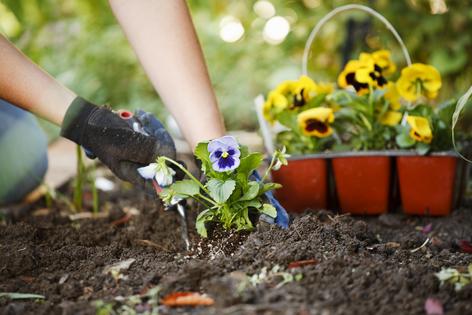10 easy steps to create gardens in your yard for the first time
Starting a garden is one of the most rewarding things you can do. Plant fragrant florals or start a vegetable garden (or both!), and everyone can benefit from getting their hands a little dirty. But if you’re new to gardening, it can be difficult to know where to start. These steps will help you get started from scratch, but if you have something particular in mind, you could also use a garden plan to guide your design.
1. Consider what to plant.
Do you want to plant a vegetable garden? An herb garden? A flower garden? If you choose vegetables and herbs for their contributions to your dinner table, plant ones your family will eat or be willing to try. If you want flowers for their flair, color, and fragrance, decide whether you want annuals that bloom most of the summer but need to be replanted each spring or perennials that have a shorter bloom time but return year after year.
2. Pick the best garden spot.
Almost all vegetables and many types of flowering plants need six to right hours of full sun each day. So you need to observe your yard throughout the day to figure out which spots receive full sun versus partial or full shade. Don’t worry if your yard is mostly shady: You won’t be able to grow tomatoes in shade, but many other plants (such as hostas and outdoor ferns) will do just fine. Check plant tags or ask the staff at your local garden center to help you understand how much sun a plant needs.
3. Clear the ground.
Get rid of weeds and sod in the area you plan to plant. If you want quick results — for example, if it’s already spring and you want veggies this summer — cut it out. Slice under the sod with a spade. Cut the sod into sections to make it easier to remove.
4. Test and improve your soil.
To learn more about your soil, have a soil test done through your county cooperative extension office. They’ll lead you through the procedure: How much soil to send from which parts of the garden and the best time to obtain samples. Expect a two-week wait for the findings, which will tell you what your soil lacks and how to amend it. You can also use a DIY kit that may not be as detailed, but will give you an idea of your soil’s nutrient levels.
5. Prepare your planting beds.
Loosening the soil in new beds before sowing or planting helps roots to grow more easily and access the water and nutrients they need. There are two methods: tilling with a mechanical device such as a rototiller or digging by hand. Either way, work the soil only when it’s moist enough to form a loose ball in your fist but dry enough to fall apart when you drop it.
6. Pick your plants.
Here are a few easy-to-grow plants for beginners:
7. Start planting.
Some plants, such as pansies and kale, tolerate cold, so you can plant them in autumn or late winter. Tomatoes and most annual flowers, on the other hand, prefer warm temperatures, so don’t plant them until the danger of frost has passed in your area. Mid-spring and mid-autumn are good times to plant perennials.
Many annuals are easy to grow from seed sown directly in the garden. Be sure to read the seed packet for information about planting time, depth, and spacing.
An easier method of starting your garden is to buy young plants that you can transplant where you want them to grow. Dig holes in your prepared bed based on tag instructions. Remove plants from the container by pushing up from the bottom. Pat soil into place around the roots, then soak the soil with water.
8. Water at the right time.
Seedlings should never be allowed to dry out, so water daily. Taper off as the plants get larger. Transplants also need frequent watering (every other day or so) until their roots become established. After that, how often you need to water depends on your soil, humidity, and rainfall, though once a week is a good place to start.
9. Protect your garden with mulch.
To help keep weeds out and moisture in, cover the soil with a couple of inches of mulch. You won’t have to water as often, and by preventing sunlight from hitting the soil, you’ll prevent weed seeds from germinating. Just make sure not to mulch over seeds you want to grow or they may not germinate either.
10. Maintain your garden regularly.
As your garden begins to grow, help it reach its full potential by keeping up with garden chores. Water the plants before they wilt. Pull weeds before they go to seed. Get rid of dead, dying, and diseased vegetation. Support tall plants (such as tomatoes) with a trellis, stake, or a tepee. Also, harvest vegetables as soon as they’re ready. And remember to stop and smell the...well, whatever it is you’re growing.
(Better Homes and Gardens is a magazine and website devoted to ideas and improvement projects for your home and garden, plus recipes and entertaining ideas. Online at www.bhg.com.)
©2025 Dotdash Meredith. All rights reserved. Used with permission. Distributed by Tribune Content Agency, LLC.






























Comments